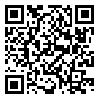Volume 13, Issue 4 (2022)
LRR 2022, 13(4): 601-628 |
Back to browse issues page
Download citation:
BibTeX | RIS | EndNote | Medlars | ProCite | Reference Manager | RefWorks
Send citation to:



BibTeX | RIS | EndNote | Medlars | ProCite | Reference Manager | RefWorks
Send citation to:
Dehghaan Tarzjaani F, Sojoodi F, Nojoumian A A, Babak Moein M. Linguistic tools of the development, maintenance and fixation processes of the male and female narrators’ personal authority in legitimating the narrations of “Se-Ketab” by Zoya Pirzad and “Solok” by Mahmoud Dolatabadi. LRR 2022; 13 (4) :601-628
URL: http://lrr.modares.ac.ir/article-14-44755-en.html
URL: http://lrr.modares.ac.ir/article-14-44755-en.html
1- PhD Graduate, Department of Literature, Humanities and Social Sciences, Faculty of Foreign anguages, Science and Research Branch, Islamic Azad University, Tehran, Iran
2- Professor, Department of Theater, Faculty of Cinema and Theater, Tehran University of Arts, Tehran, Iran
3- Associate Professor, Department of English Language and Literature,Faculty of Humanities, Shahid Beheshti University, Tehran, Iran ,a-nojoumian@sbu.ac.ir
4- Associate Professor, Department of French Language and Literature, Faculty of Foreign Languages, Central Tehran Branch, Islamic Azad University, Tehran, Iran
2- Professor, Department of Theater, Faculty of Cinema and Theater, Tehran University of Arts, Tehran, Iran
3- Associate Professor, Department of English Language and Literature,Faculty of Humanities, Shahid Beheshti University, Tehran, Iran ,
4- Associate Professor, Department of French Language and Literature, Faculty of Foreign Languages, Central Tehran Branch, Islamic Azad University, Tehran, Iran
Abstract: (1429 Views)
Authorization is a process in narration that according which the narrator constructs her/ his own legitimation and narration using the discursive articulations. The authors’ aim in this paper is to investigate the linguistic processes of development, maintenance and fixation of authorization which the female and male narrators use in the narrations. Hence, they provided a deconstructive reading of the authorization by Van Leeuwen (2007) based on Laclau and Mouffe (2001) and Derrida (1983). Then, in order to identify the linguistic tools of development, maintenance and fixation processes of the personal authority, they went through the “Se-Ketab” by Pirzad and “Solok” by Dolatabadi and purposefully examined those parts. Finally, it was found that Pirzad and Dolatabadi try to legitimize their own dimensions by using their selves and others’ positions, creating discursive nodes, and crystallizing around them. At the same time, they try to delegitimize by rejecting the meanings of the signs from others’ narratives. Also, on a larger scale, it was revealed that the two narrators’ self-representation was different; Pirzad constituted the discursive “We” and Dolatabadi an omniscient narrator. Neither of these two narrators could escape the paradox.
Keywords: personal authority, deconstruction, narrator, narration, “Se-Ketab” by Zoya Pirzad, “Solok” by Mahmoud Dolatabadi
Send email to the article author
| Rights and permissions | |
 |
This work is licensed under a Creative Commons Attribution-NonCommercial 4.0 International License. |









